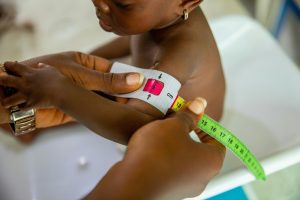Podiatrist
Podiatrist is the term for a medical physician specializing in the medical and surgical treatment of disorders of the foot ankle and related structures of the leg. It originated in North America but has now become accepted terminology in the English-speaking world for all practitioners of podiatric medicine. The earlier term chiropodist was once used in the United States but it is now considered to be outdated.
These doctors are educated and licensed as Doctors of Podiatric Medicine. The preparatory education of most podiatric physicians similar to the paths of traditional physicians includes four years of undergraduate work followed by four years in an accredited podiatric medical school followed by a three or four year hospital based podiatry residency.
In most countries podiatrist is synonymous with allied health professionals specializing in the management of the lower extremities that is the foot. The podiatrist in such nations is an expert in diagnosing and treating conditions of the foot without the need for surgery. In some instances these providers will subspecialize and after additional education, engage in reconstructive surgery of the foot and ankle.

The management is both conservative and surgical. Biomechanics of the lower extremity is primarily stressed in the education and training of a podiatrist. This is especially crucial in the case of the diabetic foot where biomechanical deformities are usually precursors to ulceration. Preventive ulceration measures utilized by a podiatrist include frequent surveillance, routine maintenance of calluses, and insert/shoe fittings. Additionally, clinic-based ulcer treatment as well as surgery that involves prophylactic and acute management can equate to limb preservation. Lastly, ongoing podiatric care can avert recurrent ulceration with offloading techniques and diabetic foot education.
Scope of podiatrist doctors
A podiatrist is a restricted-scope doctor with training in the diagnosis and treatment of pathologies of the structures of the foot and ankle. Though region-specific variance does occur for scope of practice within the United States, in general, all have examination and management of disorder of the foot across the majority of states, such as foot and ankle. In a worldwide setting, internationally the chiropodists would render conservative foot treatment. However, sometimes even the chiropodists won’t intervene via surgical interventions. Again, there are different amounts and scope of training globally by nation.
Following the completion of a baccalaureate degree, podiatric medical education consists of 4 years of doctor-level education with early exposure to foot and ankle disorders. The first 2 years consist of didactic basic science courses that closely resemble traditional allopathic and osteopathic medical education. Most schools of podiatric medicine are on joint campuses with allopathic or osteopathic medical schools with the same coursework.
The next 2 years entail clinical training with clinical rotations through different specialties such as but not limited to internal medicine, infectious disease, orthopedics, general surgery, and vascular surgery in hospital, outpatient clinic, and private practice environments. Once they finish medical school, students then proceed into 3-year foot and ankle surgical residency. Throughout this training period the residents also rotate through surgical general surgery, vascular surgery, orthopedic surgery, plastic surgery, nonsurgical services internal medicine, emergency medicine, infectious disease, and radiology with specialized training in foot and ankle surgery. After a residency, fellowship training is also possible in research, sports medicine, foot and ankle reconstruction, trauma, and diabetic limb salvage.
Patients of care
The systemic manifestations of diabetes often appear first in the foot. There are circumstances when a patient arrives at the podiatrist’s office with complaints of foot problems without a diagnosis of diabetes. Utilizing the history obtained from the history and physical examination conducted by the podiatrist, diabetes is suspected and testing is done, in addition to a referral to a primary care provider who can begin initiating therapy for this diagnosis. The presentation of diabetes of the foot predominantly consists of manifestations of vascular insufficiency and peripheral neuropathy.

In addition, callus formation on the foot signifies irregular zones of pressure or shear. Preventive care with regular debridement, along with shoe gear adjustment, will avoid advancement to ulceration. The intrinsic problem is typically some degree of biomechanical flaw involving immobility of a joint. Both accommodative and functional orthotics used in combination are capable of remedying these root biomechanical defects. Ultimately, prevention on the part of a podiatrist can limit the process of a biomechanical defect through a benign callus to amputation. Podiatric care is the first line of defense against this process.
Theme of podiatrist
Other unfavorable presentations of the foot like infections localized to the region can lead to diabetic patient loss of a limb. For example, paronychia and ingrown toenail can evolve into ascending osteomyelitis or cellulitis. The evolution can be avoided with minimally aggressive therapy like stripping of the offending border. A podiatrist knows that in the environment of a diabetic foot, aggressive treatment broad-spectrum antibiotics, radiographs to exclude osteomyelitis, and close follow-up for what could otherwise be a trivial infection may be indicated.
Another example is tinea pedis, which can progress to compromise of the plantar skin that can lead to bacterial infection and/or nonhealing ulcer. Again, a simple treatment regimen of oral or topical antifungals can rule this out. A podiatrist can detect such issues and treat them effectively. Prevention through having one’s feet regularly checked and treated by a podiatrist is crucial in preventing the cascade of events that result in loss of the limb.
Wound management and limb preservation
Podiatry is unique in its approach in that the diabetic wound is not treated in isolation but in the context of the general structure and function of the foot and ankle. Podiatrists are thus biomechanical surgeons in this sense. Podiatrists carry out local wound management and offloading with consideration for biomechanical limb function. Other than the routine local wound treatments such as debridement, topical management, and bioengineered substitute tissue, there must be a global consideration of the mechanics of foot and ankle that includes those treatments that counteract offloading and also encompasses a definitive solution to correct or compensate for that biomechanical irregularity.
These offloading devices include total contact casts, removable cast walkers, healing shoes that integrate offloading inserts with multi-density plugs, splints, and other custom shoes.

Treatment for patients
Wound care at the clinic may not be adequate and the patient might need operative intervention. Operative intervention not only involves excisionally debriding the wound in the operating room but also electively rebalancing/reconstructing a biomechanically unstable or mal-positioned foot. Procedures for rebalancing tendons involve those of the Achilles tendon lengthening, tenotomy of the flexor digitorum longus, and Jones Tenosuspension. T
he tendon-Achilles lengthening or Achilles tendon lengthening can be performed in an open or percutaneous manner for a contracted Achilles tendon. The need for the TAL is based on a biomechanical evaluation of the foot and ankle that shows restriction of dorsiflexion at the ankle joint.
This restriction produces focal areas of high pressure on the plantar forefoot that are responsible for the development, chronicity, and recurrence of an ulcer. The TAL will reduce plantar pressure forces felt in this area. A Jones Tenosuspension suspends the first metatarsal on the flexor hallucis longus tendon rerouted in a tunnel that is created at the metatarsal neck. This method raises the first metatarsal head to reduce plantar forces felt in this site of ulceration.
Reconstruction in the form of resection of bony prominences or arthrodesis of biomechanically unstable joints might be required. This pathophysiology results in the formation of bony prominences and may lead to a rocker-bottom foot shape. Unless the joints are realigned properly these bony prominences will remain a cause of ulceration. Reconstruction is the utilization of internal and external fixation to form a biomechanically stable foot.
A podiatrist integrates the understanding of foot function together with comprehension of the inherent changes in the diabetic foot when using techniques of reconstruction. For instance, fracture rules are not used in diabetic foot reconstruction. Compromise of bone quality as well as soft tissue, also with the additional hindrances of peripheral neuropathy and vascular perfusion complications, lends to a complicated state in the diabetic patient presenting with a predisposition for increased complications.
